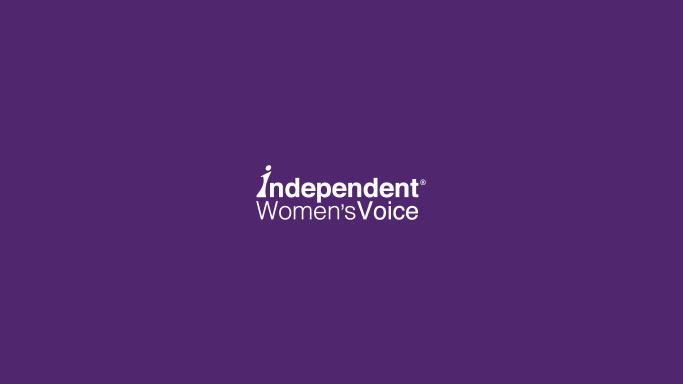At kitchen tables across America women anxiously face a struggle made even harder by coronavirus and the shutdown – how to manage their household budgets, which more women handle than men, and make ends meet.
Economically, the pandemic has been tougher on women. For instance, more women than men have lost their jobs. Finding work is tougher for moms since millions now lack childcare and must provide their own while also serving as homeschool teachers. If they’re single and allowed to go back to work, who will continue to homeschool and watch the kids? No wonder polling shows that women have been generally more anxious about the virus than men.
Since COVID-19 landed on our shores, household incomes have dropped alongside investment portfolios. Forty million people have lost their jobs and women’s feelings of security plummeted. Even those who are still employed and concerned for others watch and feel helpless as the government bails out various industries to the tune of trillions of dollars, knowing they and their children will be saddled with the debt.
Adding to their concern: all the postponed, supposedly “non-essential” medical procedures that are more essential than most appreciated. That great backlog, once we reopen society, adds an additional concern – fear that financially strapped medical providers might compensate with even more devastating surprise bills than ever.
However, hope is on the horizon. Our nation’s leaders may add language into the next COVID stimulus package that would put real money (some estimate as much as $11,000 a year) back into household budgets, provide financial certainty on healthcare decisions, and drive down healthcare costs, all while costing taxpayers… nothing.
The legislation in play – healthcare price transparency – is a game changer. It would require hospitals, other healthcare providers, and insurance companies, to make their opaque, often-exorbitant prices transparent to consumers, so patients could know the cost of care before care, rather than getting a bill after the fact that they could neither foresee nor afford. This matters, because while six percent of medical costs are emergencies: the rest are shoppable.
Without visible prices, you don’t have markets. And as with other markets, a few people being serious shoppers drives down costs for everyone – something not only women, but businesses trying to make good on that hoped for V-recovery, desperately need.
Health care is a top issue for U.S. women, who, studies show, make 80 percent of healthcare decisions, and are often responsible for the health care of dependent children or elderly family members. If healthcare prices were transparent, women could compare prices and quality, and make purchasing decisions based on real numbers. No more surprises. No more blank checks.
Price transparency would help these household CEOs directly and indirectly. If armed with real prices, 80 percent of women surveyed said they would use the information to shop for the best value, the way they do when they buy anything else, whether a refrigerator, a plane ticket, or a contractor.
They could know, for example, that having a baby in Boston could cost $8,000 at one hospital or $42,000 at another – with no difference in the quality of care. They could make more financially sound decisions that would positively impact their families’ health and wealth.
On a broader scale, price transparency would usher in market competition, which would drive down the cost of both care and coverage. It would reverse the trend of unpredictable and skyrocketing healthcare costs, and make health care function like every other market. It would also restore the lost trust between American patients and our healthcare system, a trust gap the pandemic has widened.
Despite the fact that nine out of ten Americans surveyed support the common-sense, bipartisan idea that hospitals should show their prices before patients receive care, not after, we’re still in the dark. What’s the catch?
Hospitals and insurance companies want to keep patients price blind, so they can continue to over-charge and profit excessively. To keep the status quo, they pay lots of money to lobby Congressional leaders.
But last year, the Trump Administration advanced new transparency rules that would require hospitals and insurers to disclose their real cash prices and hidden negotiated rates, so American consumers could know prices before they got care. Predictably, the hospital groups responded with a lawsuit, which is wending its way through the courts. (If you can’t win, delay.)
Meanwhile, the next stimulus package offers a chance for lawmakers to make the Trump Administration’s price transparency rules the law, which would override and shut down the lawsuit.
In short, Americans want to know prices. The Administration wants transparency, too. Both will help the recovery. Now it’s up to Congress.
It’s time to urge our lawmakers to stop voting with their pockets, and instead vote for what 90 percent of Americans want: make price transparency part of the next stimulus bill, to reverse the runaway costs of health care, and help us all recover from much more than this pandemic.
American families need more than a relief check from the government. As the kitchen-table budgeters of this country know, we need the long-term security that comes from transparency and trust in our healthcare system.
Heather R. Higgins is CEO of Independent Women’s Voice and Chairman of Independent Women’s Forum.
Cynthia A. Fisher is a life sciences entrepreneur, Founder and Chairman of PatientRightsAdvocate.org, and Founder and Former CEO of ViaCord, Inc.

